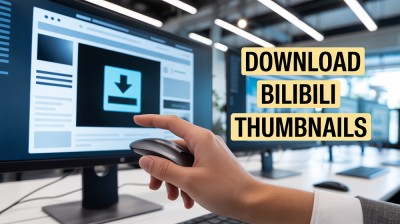Welcome to the fascinating world of Getty Images, a leading provider of visual content that has transformed how we access and utilize images. Founded in 1995, Getty Images has become synonymous with high-quality photography, offering a vast library that caters to a diverse clientele. Whether you're a marketer, journalist, or creative professional,
History and Evolution of Getty Images

Getty Images was established by Mark Getty and Jonathan Klein, who recognized the need for a comprehensive digital library of images. Their vision was to create a platform where artists could share their work while ensuring it reached a global audience. Here’s how Getty Images evolved over the years:
- 1995: Founding - Mark Getty, a descendant of the oil tycoon J. Paul Getty, and Jonathan Klein launched Getty Images with the goal of providing high-quality imagery. The initial collection included just a few thousand images.
- 1997: Going Digital - Embracing the internet, Getty Images started digitizing its collection, making it accessible to users worldwide. This move was revolutionary, as it allowed for easy searching and licensing.
- 2000: Rapid Expansion - Getty Images acquired several smaller photography agencies, expanding its portfolio significantly. Notable acquisitions included the historic Photodisc and the renowned Stockbyte.
- 2007: IPO - Getty Images went public, which provided the capital needed for further expansion and technological advancements. This was a significant milestone that increased its visibility in the stock photography market.
- 2012: Integration of User-Generated Content - The company began to embrace social media by incorporating user-generated content into its offerings. This shift allowed Getty to tap into a broader audience and diversify its collections.
- 2019: Partnership with Unsplash - Recognizing the rise of free image platforms, Getty Images partnered with Unsplash to provide high-quality, royalty-free images, appealing to a new generation of content creators.
Today, Getty Images boasts a library of over 200 million assets, ranging from editorial content to creative images and video footage. The company has also diversified its services, offering tools like Getty Images API for developers and a variety of subscription models for different types of users. The evolution of Getty Images reflects not only the changing landscape of visual media but also the company's commitment to innovation and quality.
As we continue to explore the size, reach, and market presence of Getty Images, it’s clear that this company has established itself as a powerhouse in the visual content industry. Its journey from a small startup to a global leader is a testament to the importance of adapting to changing technologies and market demands.
Also Read This: How Imago Images Distinguishes Itself from Leading Stock Photo Websites
3. Global Reach of Getty Images
When we talk about Getty Images, it's hard not to acknowledge its impressive global reach. Founded in 1995, Getty Images has grown from a small stock photo agency into a powerhouse in the visual content industry. With operations spanning over 100 countries,
One of the key factors behind Getty Images' global success is its extensive library, which boasts millions of assets. This vast collection isn't just about numbers; it’s about variety. Clients can find everything from high-quality editorial images capturing major world events to stunning creative visuals that can elevate marketing campaigns. The adaptability of their offerings makes them a go-to resource for companies looking to make an impact across different markets.
Moreover, Getty Images leverages a robust distribution network. Their partnership with platforms like Adobe Stock and Shutterstock increases visibility and accessibility. Whether you're a small business in Brazil or a large corporation in Japan, you can easily access Getty's assets online, thanks to a user-friendly interface and localized services.
Additionally, Getty’s commitment to cultural representation is noteworthy. They've made efforts to diversify their image library to reflect global perspectives. For instance, initiatives like the “Creative Bursary” program aim to support underrepresented creators, ensuring that the content available on their platform resonates with a worldwide audience.
In a world where visual storytelling is essential for brand identity, Getty Images stands out with its expansive reach. By continuously adapting to different cultural contexts and technological advancements, they have secured a place in the hearts of creatives around the globe.
Also Read This: How to Download Getty Images for Free
4. Market Presence and Competitors
Getty Images commands a significant market presence, making it one of the leading players in the visual content industry. Their business model combines traditional stock photography with innovative licensing solutions, which has allowed them to remain relevant in a rapidly changing digital landscape.
However, with great success comes competition. Getty Images faces stiff rivalry from various companies, including:
- Shutterstock: Known for its vast library and subscription-based model, Shutterstock attracts a diverse clientele. They offer affordable pricing plans, making them a popular choice for small businesses and individual creators.
- Adobe Stock: Integrated seamlessly into Adobe Creative Cloud, Adobe Stock appeals to designers and creatives already using Adobe products. Its accessibility and quality make it a strong contender in the market.
- iStock: A subsidiary of Getty Images, iStock caters to budget-conscious clients while still providing high-quality images. This dual-brand strategy allows Getty to capture a broader audience.
- 123RF: This platform is notable for its competitive pricing and a growing library of content. It targets both professionals and novices looking for cost-effective solutions.
In addition to these competitors, emerging platforms like Pexels and Unsplash are gaining traction. These sites offer free high-quality images, appealing to startups and independent creators who may not have the budget for paid stock. This shift toward free content poses a unique challenge for established players like Getty Images to differentiate their offerings.
To maintain its market presence, Getty Images continually invests in technology and innovation. Their use of artificial intelligence to tag and categorize images enhances user experience, making it easier for clients to find exactly what they need. Furthermore, Getty is exploring new revenue streams through partnerships with social media platforms, ensuring their content reaches broader audiences.
In conclusion, while Getty Images enjoys a strong market presence, the competition is fierce. By staying ahead of trends and continuously adapting to the needs of their clientele, Getty Images is well-positioned to navigate the evolving landscape of visual content.
Also Read This: How to Sell on Shutterstock: A Step-by-Step Guide for Photographers
5. Services Offered by Getty Images
Getty Images has established itself as a powerhouse in the visual content industry, providing a plethora of services tailored to meet diverse client needs. Whether you're a creative professional, marketer, or a company looking to enhance your brand, Getty Images has something for everyone. Let’s explore some of their key offerings:
- Stock Photos and Videos: Getty Images boasts a vast library of over 200 million assets, including high-quality stock photos, illustrations, and videos. From stunning landscapes to candid moments, their collection is perfect for editorial use, advertising, and social media.
- Custom Content Creation: One of Getty’s standout services is their ability to create tailored visual content. Clients can collaborate with Getty’s talented photographers and videographers to produce unique imagery that perfectly aligns with their brand identity.
- Editorial Services: For publications and news outlets, Getty provides a comprehensive editorial service that includes breaking news images, sports photography, and entertainment coverage. This ensures that media professionals have access to timely and relevant content.
- Creative Licensing Options: Getty offers flexible licensing options that cater to both commercial and non-commercial uses. Whether you need a one-time usage license or an extended license for broader applications, Getty has you covered.
- API Integration: For businesses looking to integrate Getty's vast resources into their platforms, they offer robust API solutions. This allows companies to seamlessly access and utilize Getty's content directly within their applications, enhancing user experience.
With these diverse services, Getty Images doesn’t just provide visuals; they offer a comprehensive solution that empowers creativity across various industries. They remain steadfast in their commitment to quality and innovation, ensuring that clients receive the best possible content for their needs.
Also Read This: Explore Why Shutterstock Can Be Expensive
6. Impact of Technology on Getty Images
Technology has significantly reshaped the way Getty Images operates, enhancing its market presence and streamlining services. Let’s dive into some of the notable impacts technology has had on Getty Images:
- Advanced Search Features: With the integration of AI and machine learning, Getty Images has improved its search capabilities. Users can now find images more efficiently using keyword suggestions and visual recognition technology that identifies similar images. This not only saves time but also helps users discover new content that may be relevant to their projects.
- Mobile Accessibility: The rise of mobile technology has led Getty to develop user-friendly apps, allowing clients to browse and purchase images on the go. This accessibility has broadened their reach, catering to professionals who need instant solutions while out and about.
- Data Analytics: Getty Images leverages data analytics to understand market trends and customer preferences. By analyzing user behavior, they can tailor their offerings, ensuring that clients receive relevant and high-demand content.
- Digital Rights Management: As digital content becomes more prevalent, Getty has implemented advanced digital rights management tools. These technologies help protect their assets from unauthorized use, ensuring that photographers and content creators are justly compensated for their work.
- Virtual Reality and 360-Degree Content: Embracing cutting-edge technologies, Getty has ventured into virtual reality and 360-degree video content. This innovative approach allows clients to create immersive experiences, setting new standards in visual storytelling.
The infusion of technology into Getty Images not only enhances operational efficiency but also enriches the user experience. As they continue to adapt and innovate, Getty Images remains a leader in the visual content industry, ready to meet the evolving demands of its clientele.
Also Read This: How to Properly Cite Images from Getty Images in Your Work
7. Future Trends and Developments in the Stock Photo Industry
The stock photo industry is evolving faster than ever, driven by technology and changing consumer preferences. As we look ahead, several trends are set to shape its future, and Getty Images is at the forefront of these developments.
1. AI-Powered Content Generation
Artificial Intelligence is making waves in stock photography. Platforms are now utilizing AI to generate unique images tailored to specific client needs. This trend not only enhances creativity but also allows for hyper-personalization. Imagine being able to request an image that combines various styles or themes in a matter of seconds! Getty Images has already begun exploring AI tools to optimize its image search and offer more relevant suggestions to users.
2. Increased Demand for Authenticity
Consumers are increasingly gravitating towards authentic, relatable visuals that tell a story. In response, stock photo agencies are shifting their focus from traditional, posed images to more candid, real-life moments. Getty Images has already expanded its collection to include diverse and authentic representations of life, aiming to resonate more deeply with audiences.
3. Sustainability and Social Responsibility
The emphasis on sustainability is growing in the creative industries. Photographers and agencies are expected to be more conscious of their environmental impact. Getty Images is taking steps to promote eco-friendly practices by partnering with organizations that champion sustainability and offering resources to photographers about responsible shooting practices.
4. Virtual Reality and Augmented Reality
As technology advances, the integration of Virtual Reality (VR) and Augmented Reality (AR) into stock photography is becoming more prominent. These immersive experiences allow users to engage with images in new ways. Getty Images is exploring how VR and AR can be utilized to create more dynamic storytelling experiences that captivate viewers.
5. Subscription Models on the Rise
With the increasing number of businesses and creators needing stock images, subscription models are becoming popular. These models offer flexibility and cater to the varying needs of users. Getty Images has embraced this trend with plans to enhance their subscription services, providing more tailored options for different markets, from startups to large enterprises.
In conclusion, the stock photo industry, spearheaded by players like Getty Images, is on the brink of significant transformation. The combination of technology, a demand for authenticity, and a focus on sustainability will define the landscape. Those who adapt to these changes will not only thrive but also shape the future of visual media.
8. Conclusion: The Significance of Getty Images in Visual Media
As we wrap up our exploration of Getty Images, it's clear that this company plays a monumental role in the world of visual media. Its impact extends beyond just being a source of stock photos; Getty Images has become a symbol of creativity, diversity, and innovation.
Global Reach and Influence
With millions of assets and a vast network of contributors, Getty Images is not just a marketplace for images but a cultural touchstone. Its archives span decades and represent a global perspective, offering a rich tapestry of stories from every corner of the world. Whether it's the latest news event captured in real time or artistic representations that evoke emotion, Getty's extensive collection has something for everyone.
Quality and Standards
One of the reasons Getty Images stands out is its commitment to quality. The rigorous selection process for images ensures that only the best make it into their library. This dedication to high standards helps brands and creators find visuals that are not only beautiful but also impactful. It’s a vital resource for professionals in marketing, journalism, and beyond.
Support for Creatives
Furthermore, Getty Images plays a crucial role in supporting photographers and artists around the globe. By providing a platform for creatives to showcase their work, Getty fosters a thriving community that values and rewards talent. This support helps ensure a diverse range of voices and perspectives in the images that populate our media landscape.
Adapting to Change
In a fast-paced digital world, Getty Images continually adapts to meet the evolving needs of its audience. By embracing new technologies and trends, it remains relevant and influential, setting the pace for the entire stock photography industry. Its efforts to incorporate AI, promote authentic imagery, and commit to sustainability reflect a forward-thinking approach that acknowledges the importance of both creativity and responsibility.
In summary, Getty Images is not just a leader in stock photography; it is a vital part of the fabric of visual media. Its significance lies in its ability to inspire, connect, and empower both creators and consumers. As we move forward, the importance of such a platform will only grow, shaping the way we communicate through images for years to come.
 admin
admin








